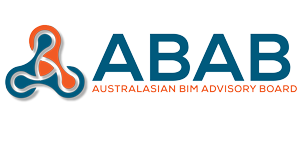ABAB June 2025 Communique: Strengthening the Case for Digital in a Constrained Environment
On 13 June 2025, the Australasian BIM Advisory Board (ABAB) convened for its second meeting of the year. Held in a hybrid format from the NATSPEC office on Gadigal land, the forum brought together participants from across Australia and New Zealand to exchange updates, insights, and strategic direction.
The meeting featured comprehensive updates from across jurisdictions. Queensland delegates shared updates on renewed efforts around BIM specifications for the Brisbane 2032 Olympic and Paralympic Games. IPWEA reported on the modernisation of their technical resources, and updates of Practice Notes to better reflect contemporary industry needs. In New South Wales, representatives outlined structural changes within Transport for NSW and the ongoing development of model state initiatives and sustainability programs. Infrastructure Australia shared valuable insights from its Market Capacity Program and the annual survey, which continue to assess national delivery capability in the face of increasing project demand. At the federal level, the meeting covered various initiatives, including the National Construction Strategy and National Construction Industry Forum.
A core message echoed throughout the discussions: in a time of tightening budgets and increasing complexity, BIM and Digital Engineering (DE) must not be sidelined. Instead, these tools should be recognised as powerful enablers of cost-efficiency, time savings, sustainability, and productivity. Rather than scaling back, this is the moment to double down on digital to deliver smarter, leaner, and more coordinated outcomes.
A key focus of the meeting was the consideration of the draft ABAB Digitalisation for Decarbonisation paper, by ABAB Chair, Andrew Curthoys. The paper prompted robust discussion on how digital processes can directly support carbon reduction through traceable, transparent methodologies and lifecycle-based reporting. The Board also considered the application of blockchain in carbon accounting and discussed the importance of integrated data frameworks to support decarbonisation targets. The endorsed draft will now be circulated for broader consultation.
The day also featured a presentation from Eric Bugeja, buildingSMART on Digital Ready Engineers – Overcoming the challenges and building new capabilities. The presentation highlighted how digital tools are not only enhancing collaboration and decision-making but also enabling substantial time savings in project delivery—savings that are becoming increasingly vital in today’s environment. The presentation and discussion also reflected on the cultural shift that accompanies digital adoption, noting that improved tools lead to rising expectations for smarter, faster, and more integrated delivery.
Meaningful discussion among ABAB members explored the need to extend Digital Engineering and BIM principles beyond design and construction into the facilities management and asset management phases. Members emphasised the importance of capturing and structuring data aligned with the actual use case of the asset. As Andrew Curthoys reflected, “Good data doesn’t just help us build— it helps us operate and maintain. If we stop at handover, we miss the greatest opportunity digital can offer: lifecycle value.”
This discussion reaffirmed ABAB’s commitment to a whole-of-life approach to digital enablement. By embedding structured, usable data into assets from the start, the industry can better meet the needs of owners, operators, and communities over the long term.
The meeting concluded with anticipation for ABAB’s next in-person gathering, scheduled for 2 September 2025, with the location to be confirmed. As Chair Andrew Curthoys summarised, “The strength of ABAB lies in our shared purpose and collective knowledge. As we face into an increasingly digital and decarbonised future, it’s our collaboration that will define the industry’s success.”
________________________________________________________________
The Australasian BIM Advisory Board established by the Australasian Procurement and Construction Council (APCC) and the Australian Construction Industry Forum (ACIF), together with the key standard-setting bodies, NATSPEC, buildingSMART and Standards Australia, promotes best practice and consistent approaches to BIM practices, standards, and requirements. ABAB guidance materials are available at: Australasian BIM Advisory Board (abab.net.au).


0 Comments Leave a comment